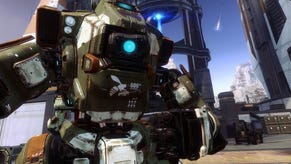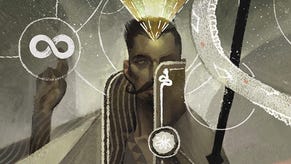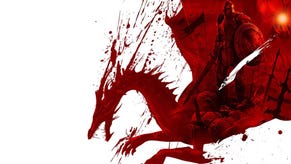Face-Off: Dragon Age II
A sense of scale.
The DirectX 11 renderer also introduces other features such as improved dynamic lighting, superior shadows and soft particle edges. Screen space ambient occlusion (SSAO) can also be enabled in DX11 mode along with a diffusion depth of field effect and higher-quality motion blur. For those in the DX10 no man's land, the DX11 renderer is still used, but with a more limited feature-set, while those still using DirectX 9 (mostly Windows XP users) top-out at the medium level visuals you got to experience in the Dragon Age II demo.
We would have liked to have used the PC's top-end "Very High" graphical preset for our comparison, but there's just one problem - it's completely borked on our NVIDIA test system, to the point where we often get single-digit frame rates, even at 720p. In truth though, the differences with the mode enabled aren't exactly enormous.
BioWare has implemented geometry displacement and dynamic tessellation in Dragon Age II's DirectX 11 mode, and these are key features of the "Very High" preset. The idea here is that as you move closer to an object, additional polygons are extrapolated out from the base model, literally adding more detail. If you've seen Epic's recent DX11 Samaritan demo from GDC, you'd have seen some advanced tessellation work, specifically on the protagonist's face as he moves closer to the camera.
Improving the quality of Dragon Age II's characters in the cut-scenes might seem like a good way to utilise tessellation, but instead BioWare has opted to concentrate on the environments instead. The impact of the improvements is understated to say the least, as this small batch of comparison shots indicates. It also seems to be the case that anti-aliasing doesn't play so nicely with tessellated edges.

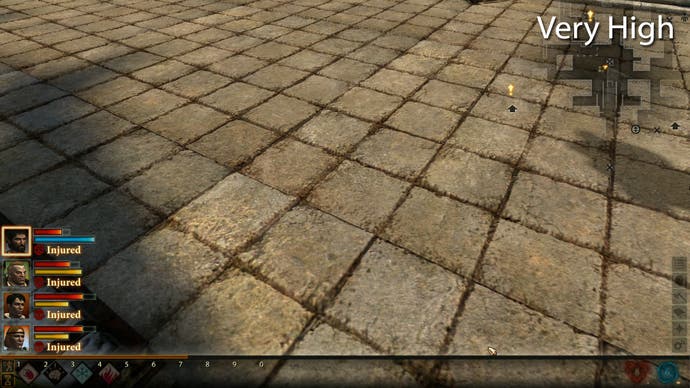
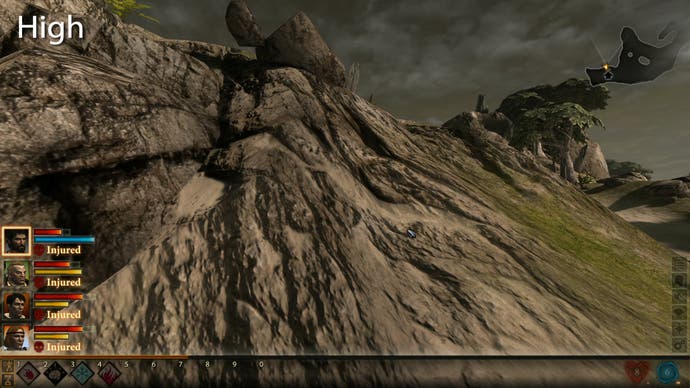

The "Very High" preset also improves contact shadow quality and particle effects and also enables the use of a very high-quality motion blur effect, but again, in the rush of gameplay, these subtle effects aren't exactly obvious to the eye.
Just looking at the game's raw tech specs, the PC version of Dragon Age II should easily emerge triumphant in this comparison feature - the combination of improved artwork, higher frame-rates, better effects and the implementation of cutting edge DirectX 11 rendering features should elevate it beyond the console offerings significantly. Greater performance levels and improved resolution are always welcome but the emphasis of the graphical upgrades here doesn't really seem to address the most glaring graphical shortcomings.
There's also a sense that the PC version shipped without the requisite level of QA. The fact that many of the DX11 options in the "Very High" settings effectively cripple a powerful NVIDIA system seems quite unfathomable. A patch is forthcoming, but the fault is so obvious in the current build that BioWare must surely have been aware of it before it shipped.
In terms of measurable and quantifiable criteria, the PC version is the one to get, but it's difficult to escape the nagging feeling that it should have been a night-and-day improvement over the PS3 and Xbox 360 versions. In terms of which console version to buy, there's no clear winner here - they're both good games, but each has its strengths and weaknesses. BioWare has done a good job in providing what is for the most part a like-for-like experience, and the choice between them boils down to whether you prefer v-sync and a lower frame-rate in taxing situations on 360, or smoother performance and screen-tear on PS3. There's very little in it, but in this case, I'd go for the latter.


